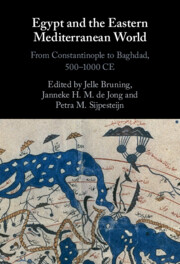Book contents
- Egypt and the Eastern Mediterranean World
- Egypt and the Eastern Mediterranean World
- Copyright page
- Contents
- Figures, Graphs, and Tables
- Notes on Contributors
- Notes on Transliteration, Names, and Dates
- Preface and Acknowledgments
- Additional material
- Introduction
- Part I Political and Administrative Connections
- Part II Economic Connections
- Part III Social and Cultural Connections
- Index
- References
Part II - Economic Connections
Published online by Cambridge University Press: 01 December 2022
- Egypt and the Eastern Mediterranean World
- Egypt and the Eastern Mediterranean World
- Copyright page
- Contents
- Figures, Graphs, and Tables
- Notes on Contributors
- Notes on Transliteration, Names, and Dates
- Preface and Acknowledgments
- Additional material
- Introduction
- Part I Political and Administrative Connections
- Part II Economic Connections
- Part III Social and Cultural Connections
- Index
- References
Summary

- Type
- Chapter
- Information
- Egypt and the Eastern Mediterranean WorldFrom Constantinople to Baghdad, 500-1000 CE, pp. 203 - 322Publisher: Cambridge University PressPrint publication year: 2022
References
Bibliography
Bibliography
For references to editions of papyri and documents, this chapter makes use of the abbreviations of the Checklist of Editions of Greek, Latin, Demotic and Coptic Papyri, Ostraca and Tablets, accessible online at https://papyri.info/docs/checklist and the Checklist of Arabic Documents available online at www.naher-osten.lmu.de/isapchecklist.



